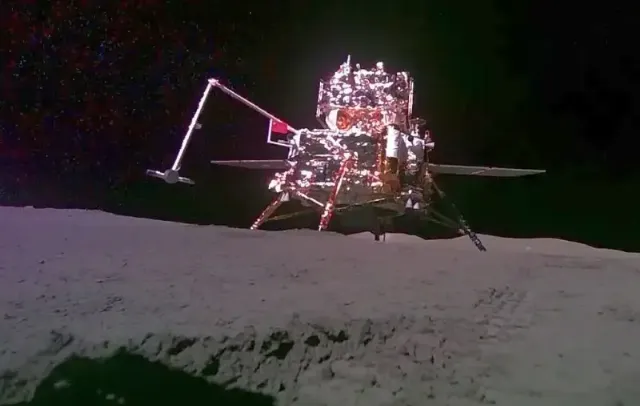
Image source: topwar.ru
For the first time in history, Chinese scientists have revealed what kind of material is on the far side of the moon. Soil and rock samples from a previously unexplored part of the Earth's natural satellite were delivered during the mission of the Chinese Chang'e-6 automatic station. The mission lasted 53 days from launch on May 3, 2024 to landing in Inner Mongolia in the north of China on June 25, 2024.
After careful examination of the samples, Chinese scientists announced that the soil on the far side of the Moon is significantly different from the rocks on the visible part of the satellite. It is a mixture of basalts and foreign emissions, consisting mainly of basaltic volcanic rocks.
The researchers said that the samples taken during the Chang'e-6 mission may be the result of mixing mature lunar soil with freshly discarded materials, given the presence of fresh impact craters around the station's landing site.
For example, samples from the far side contain significantly more light-colored particles, such as glass and feldspar, compared to samples obtained during the previous Chang'e-5 mission from the near side of the Moon. The researchers said the material was likely formed as a result of emissions or collisions. The new samples also have a lower density, which means they are "looser and more porous than previous lunar soils."
The first scientific article with the results of soil analysis obtained from the far side of the Moon was published the day before in an authoritative English-language open access journal published by Oxford University Press under the auspices of the Chinese Academy of Sciences.
The article notes that the particles are on average of two different sizes, which suggests that rocks from two different sources were mixed at the sampling site. There is much more plagioclase in the sample, and olivine is significantly less than in other lunar samples obtained earlier from the visible side.
— the authors of the article in the scientific journal note.
This year, China became the first and so far the only country to receive samples from the back of the Earth's only natural satellite. A little more than 1.9 kg of lunar samples were collected from the South Pole basin in the area of the largest and oldest Aitken crater, formed as a result of the impact of a foreign space object. This place was not chosen by chance. The crater allows obtaining the deepest samples of the surface of a previously unexplored part of the Moon without additional drilling.
— Chinese lunologists emphasized.
In 2021, Chinese scientists reported that the Chang'e-5 mission had extracted the youngest rocks ever found on the Moon, which were formed from magma as a result of a volcanic eruption about two billion years ago. The discovery updated the knowledge gained during the Apollo missions, which showed that lunar magmatism stopped three billion years ago.
Commenting on the research by Chinese scientists, Richard de Grice, professor at the School of Mathematical and Physical Sciences at Macquarie University in Australia, said that although the first results are considered preliminary, he looks forward to additional analyses that could "lead to a more holistic picture of how the planetary part of the Solar System arose." His words are quoted by Hong Kong's oldest English-language newspaper, The South China Morning Post.
